Exploring 3D Printed Titanium: Innovations and Uses
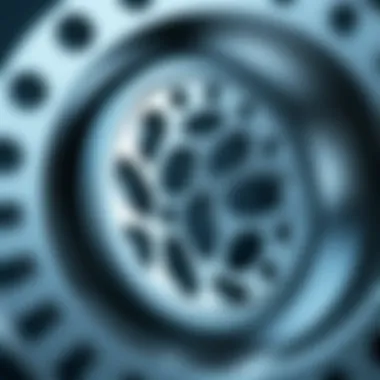
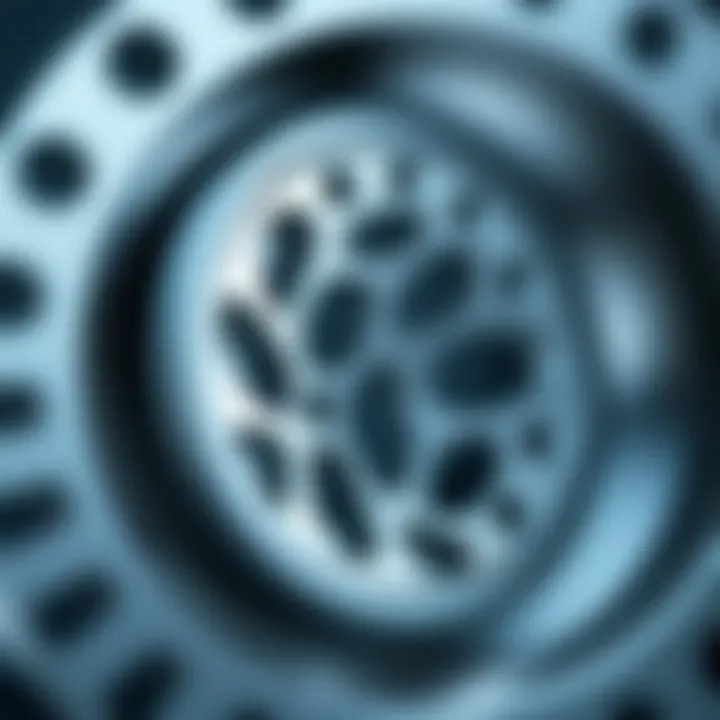
Article Overview
Purpose of the Article
This article aims to present a thorough examination of the innovations and applications associated with 3D printed titanium. By doing so, it reflects the rapid advancements in additive manufacturing technologies and their implications on different fields. Given titanium's unique properties—like high strength-to-weight ratio, corrosion resistance, and biocompatibility—it's becoming increasingly relevant in sectors ranging from aerospace to medical.
Relevance to Multiple Disciplines
The significance of 3D printed titanium crosses various boundaries. Students, educators, researchers, and industry professionals will find value in understanding how this metal is revolutionizing traditional manufacturing methods. It provides not only specific advantages in engineering and design but also poses new challenges and opportunities in the realm of sustainable and efficient production practices.
Research Background
Historical Context
The journey of titanium in manufacturing began in the mid-20th century when its potential was first recognized. Originally, it served predominantly in aerospace applications due to its light weight and durability. The advent of additive manufacturing in the 21st century, however, marked a turning point for titanium. Traditional methods, like machining and casting, have long been limited by material waste and design constraints. With the rise of 3D printing, the landscape changed. Now, titanium can be produced layer by layer, allowing for intricate geometries and reduced waste.
Key Concepts and Definitions
Understanding the terminology surrounding 3D printed titanium is essential for grasping the topic's depth:
- Additive Manufacturing: A process that builds 3D objects by adding material, layer by layer.
- Selective Laser Melting (SLM): A specific technique used in 3D printing titanium that employs laser technology to fuse powder particles.
- Biocompatibility: The ability of a material to interact with biological systems without causing an adverse reaction, particularly essential in medical applications.
"The transformative nature of 3D printed titanium lies not just in its properties, but in how it reshapes our approach to design and manufacturing."
"The transformative nature of 3D printed titanium lies not just in its properties, but in how it reshapes our approach to design and manufacturing."
The further exploration of these areas will lay the groundwork for deeper discussions on innovations and the specific industries leveraging this advanced material. This article takes a closer look at the intrinsic advantages of titanium compared to traditional materials, the intricacies involved in its production, and the burgeoning applications across various sectors.
Keywords
- 3D printing
- titanium manufacturing
- additive manufacturing
- aerospace applications
- medical technologies
For more information on titanium and its properties, you can visit Wikipedia.
Connecting the dots between historical usage, manufacturing processes, and current innovations sets the stage for assessing the practical applications of 3D printed titanium in diverse industries.
Prologue to Titanium
Titanium has carved a niche for itself in the realm of materials science and engineering, primarily due to its remarkable properties. This lightweight metal, known for its strength and durability, possesses unique characteristics that render it a top contender for various critical applications across industries. The increasing adoption of titanium in 3D printing signifies not just an evolution in manufacturing but also the potential for innovations that could redefine production standards.
Properties of Titanium
Chemical Composition
The chemical makeup of titanium is primarily defined by its elemental form, which includes a small percentage of other elements such as aluminum and vanadium. This composition gives titanium its distinct properties, most notably its strength-to-weight ratio. It's often preferred for applications where lightness is crucial, without sacrificing strength. One of the key characteristics that elevate titanium is its low density. This makes it remarkably lightweight compared to steel, allowing for reduced structural weight in projects like aerospace engineering while maintaining robustness.
However, titanium also presents challenges; the extraction process can be energy-intensive and costly. This factor can limit its use in certain economical applications but does not overshadow its effectiveness in high-performance environments.
Mechanical Strength
Mechanical strength is another standout feature of titanium, chiefly due to its ability to withstand high levels of stress without deforming. This quality is particularly beneficial in extreme conditions, where traditional metals might fail. Titanium’s yield strength allows engineers to design components that can bear significant loads while minimizing material use. Additionally, titanium's fatigue strength helps in ensuring longevity in components that undergo cyclic loading.
Yet, this strength isn’t without its trade-offs. The machining of titanium can be problematic; it requires specialized techniques and tools to avoid wear and tear on equipment, which can lead to increased manufacturing costs.
Corrosion Resistance
Titanium boasts excellent corrosion resistance, making it an ideal candidate for environments that require durability against harsh conditions. Its natural ability to form a protective oxide layer means that it can resist many forms of environmental degradation, such as moisture and salt. This feature is particularly important in applications like marine or chemical processing, where materials are frequently exposed to corrosive elements.
Despite these attributes, the cost associated with titanium’s extraction and production often raises questions about its practicality in less demanding applications.
Why 3D Printing Titanium?
Advantages of Additive Manufacturing
The advantages of additive manufacturing in producing titanium components cannot be overstated. This technology allows for a level of precision and detail that traditional methods often cannot achieve. Additive manufacturing's layer-by-layer approach enables the creation of complex geometries that are lightweight yet strong, aligning perfectly with the intrinsic benefits of titanium. Moreover, using 3D printing can significantly cut down on waste by utilizing only the material needed, leading to greater efficiency.
However, the cost of 3D printing technology and materials can still be a barrier for some users. It’s essential to weigh these factors against potential savings in material waste and time.
Flexibility in Design
Flexibility in design is one of the hallmarks of 3D printing technology. This adaptability allows engineers and designers to innovate freely, producing intricate shapes that were previously unfeasible with conventional manufacturing techniques. For titanium, this flexibility means optimizing structures for weight and strength, important aspects in industries such as aerospace and automotive.
Nevertheless, while 3D printing offers design freedom, it also necessitates an understanding of the technology's limitations, including the layers' adhesion and how they may affect the final product's properties.
Material Efficiency
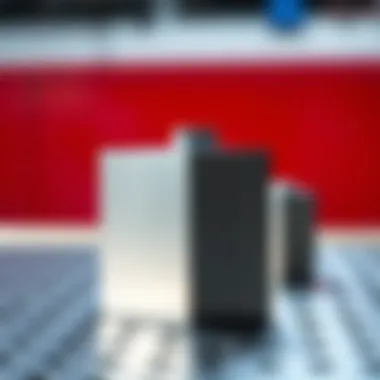
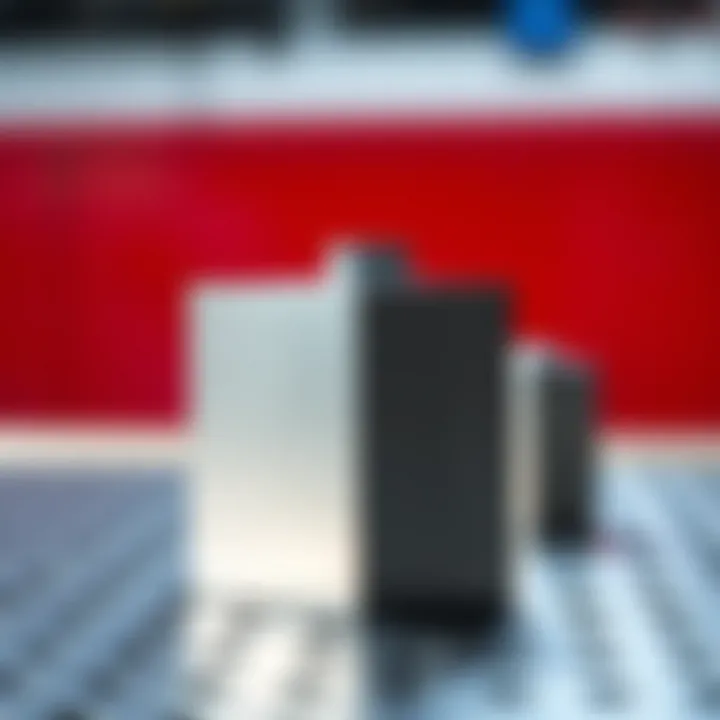
Material efficiency is crucial in the competitiveness of any manufacturing process. The use of titanium in 3D printing epitomizes this efficiency, as it minimizes waste material during the fabrication process. The ability to build components that require less material without compromising functionality is increasingly important in today’s manufacturing landscape.
However, while additive manufacturing promises savings on materials, the initial costs associated with titanium as a raw material can be prohibitive. Careful cost-benefit analyses are needed to determine the viability of titanium for specific applications.
"Titanium's unique properties set it apart; when combined with 3D printing, they promise exciting advancements in technology and design across various sectors."
"Titanium's unique properties set it apart; when combined with 3D printing, they promise exciting advancements in technology and design across various sectors."
Thus, understanding the properties, advantages, and challenges of titanium in 3D printing is paramount for anyone involved in material science or manufacturing. This foundation sets the stage for exploring how these aspects interlace with innovative applications in the upcoming sections.
Additive Manufacturing Techniques
Additive manufacturing, commonly known as 3D printing, is at the forefront of revolutionary advancements in titanium production. This section highlights the significance of these manufacturing techniques, illustrating how they contribute to innovations in various industries. The remarkable ability of additive manufacturing to create complex structures with minimal waste is transforming traditional production processes.
Laser Powder Bed Fusion
Process Overview
Laser Powder Bed Fusion (LPBF) involves using a high-powered laser to melt metallic powders layer by layer, fusing them into solid structures. This technique stands out for its precision and ability to create intricate geometries that are difficult or impossible to achieve with conventional methods. The key characteristic of LPBF is its capability to create components directly from digital CAD models, simplifying the design-to-production workflow.
One of the notable advantages of this process is its flexibility in producing customized parts tailored to specific applications. However, one must be aware of its energy consumption and the cost associated with the equipment and materials.
Applications in Aerospace
The aerospace industry has embraced Laser Powder Bed Fusion extensively, owing to its ability to produce lightweight yet robust components. Components such as turbine blades and support structures that benefit from reduced weight are now being manufactured using this technique. The primary appeal here is the enhancement of performance through weight reduction, which ultimately leads to improved fuel efficiency in aircraft, thereby having a significant impact on operational costs.
Additionally, the intricate designs achievable with LPBF allow for optimized aerodynamic profiles. Yet, it’s important to consider the method’s reliance on expensive materials and the expertise required to operate the sophisticated machinery.
Electron Beam Melting
Technical Specifications
Electron Beam Melting (EBM) is another compelling additive manufacturing method that employs an electron beam to melt titanium powder in a vacuum environment. This process is known for its excellent thermal control, which is crucial in minimizing thermal stresses in the build. The key characteristic of EBM is its ability to process even larger parts while maintaining effective layer adhesion.
This method is particularly beneficial in creating near-net-shape components, which means less material waste compared to traditional machining methods. One unique feature of EBM is that it can work with a wider range of titanium alloys, enhancing its versatility. However, the initial setup costs and the slow build speeds can be seen as drawbacks.
Use Cases in Medical Devices
EBM has found valuable applications in the medical field, specifically in the creation of customized implants. The precision and ability to produce intricate designs make it a strong contender for creating patient-specific implants that fit perfectly with the patient’s anatomy. This tailored approach can lead to better patient outcomes, as implants can be designed for optimal performance.
Furthermore, the compatibility of titanium with biological systems is predominantly advantageous in medical applications. Yet, the technology’s limitation on build size may pose challenges when producing larger components, necessitating further exploration into optimizing the process.
Binder Jetting
Process Mechanisms
Binder Jetting operates differently from other additive techniques by using a liquid binder to bond metal powders layer by layer. This method is known for its speed in producing parts, as it can create fully dense structures without the high energy requirements associated with other methods. The standout feature of Binder Jetting is its ability to utilize various materials, making it highly adaptable to different applications.
The benefits include lower production costs and faster turnaround times. However, parts produced via Binder Jetting often require post-processing, including sintering, to achieve the desired mechanical properties.
Benefits and Limitations
The key advantage of Binder Jetting lies in its capacity for large-scale production. Since it can create numerous parts simultaneously, it’s ideal for bulk manufacturing. This technique is also favorable for prototyping, allowing for rapid iteration of designs. On the downside, achieving surface finish and mechanical properties that meet high-performance standards may require additional steps, making the process somewhat complex.
Despite these limitations, the potential for cost-effective solutions in the metal printing domain is evident, affirming Binder Jetting's role as a significant player in additive manufacturing.
Applications of 3D Printed Titanium
The applications of 3D printed titanium span a myriad of industries, underpinning the significance of this metal in modern engineering and design. Titanium’s unique blend of lightweight properties and strength has been a game changer. As the spotlight today shines on sustainability and efficiency, 3D print technologies provide innovative solutions that traditional manufacturing can’t match. Whether it’s in aerospace or healthcare, the advantages are plenty, yet the road is not devoid of hurdles.
Aerospace Industry
Components and Structures
In the realm of aerospace, 3D printed titanium components stand out for their lightweight yet robust characteristics. Traditional designs often led to parts being heavier than ideal, affecting fuel efficiency. With precision additive manufacturing, intricate geometries can be achieved, reducing both weight and the number of parts needed. This streamlining leads to better assembly times and lower costs.
For instance, titanium brackets or engine components made through 3D printing allow for optimized airflow and weight savings compared to conventional materials.
The customization options available through 3D printing mean these components can be tailored for specific aircraft, enhancing performance and increasing lifespan.
Weight Reduction Strategies
Ultimately, strategies that focus on weight reduction in aerospace applications are paramount. By utilizing 3D printing, engineers can significantly reduce unwanted mass while maintaining structural integrity. The key characteristic of these strategies is the ability to design lightweight structures without compromising on strength.
The unique feature of integrating lattice structures and conformal cooling channels leads to a paradigm shift in how components are designed. This approach not only ensures aerodynamics but also enhances overall fuel efficiency, which is becoming ever more critical in reducing aviation’s carbon footprint.
Medical Field

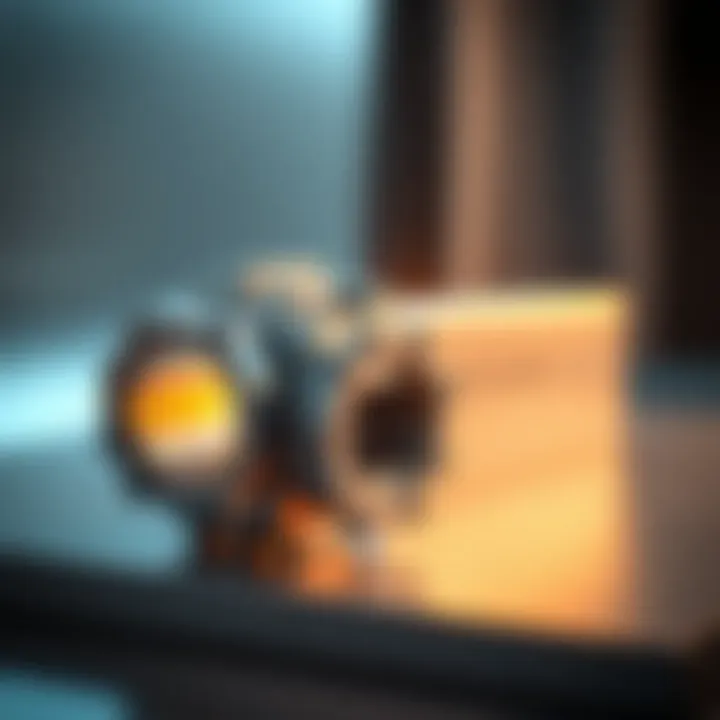
Customized Implants
Moving into medicine, 3D printed titanium has brought forth a revolution in customized implants. The possibility of producing bespoke implants tailored specifically to the patient’s anatomy makes it a standout option. By using advanced imaging techniques, surgeons can now have implants that fit them perfectly, enhancing recovery and reducing the chances of complications.
The beneficial nature of these implants lies in their biocompatibility, which is essential for patient safety. However, while the advantages are notable, the customizability might come with higher costs and longer production times that need to be considered.
Prosthetics and Orthotics
In the realm of prosthetics and orthotics, 3D printing technology promotes remarkable advancements. The ability to create lighter, more durable, and personalized prosthetics leads to enhanced mobility for users. Each device can be designed to suit the user’s specific needs, providing not just physical but emotional support as well.
The unique features here include the ability to integrate sensors or adjust designs based on user feedback. However, while performance improvements are clear, the initial costs and the learning curve associated with this technology can pose challenges.
Automotive Applications
Design Innovations
The automotive field has not been left behind. 3D printed titanium allows for groundbreaking design innovations that were once thought impossible. From custom chassis to intricate engine parts, the level of design freedom offered by additive manufacturing is unparalleled.
This design flexibility leads to reduced lead times, as products can be designed and tested rapidly. Moreover, this adaptability can lead to inspiration in aesthetics and functionality within the automotive space.
Performance Enhancements
Finally, performance enhancements through 3D printing are noteworthy. Engine components manufactured from titanium not only provide weight advantages but can tolerate extreme conditions.
By leveraging the unique properties of titanium, automotive engineers can create parts that withstand higher stress levels and last longer. But the downside includes the need for specific technologies and the learning outlook they entail.
With just a glance at a few industries, it's evident that 3D printed titanium transforms how we think about production, efficiency, and application across various sectors.
Challenges in 3D Printing Titanium
The journey into the realm of 3D printed titanium isn't just about harnessing its strengths; it’s also about navigating the stormy sea of challenges that accompany this innovative journey. This section aims to cast light on the hurdles faced in the 3D printing of titanium, addressing significant elements such as material limitations, technical obstacles, and regulatory concerns. Understanding these challenges is vital for anyone keen on leveraging titanium's potential in an increasingly competitive landscape.
Material Limitations
Cost Analysis
Cost plays a pivotal role in 3D printing titanium and its applications. The process of manufacturing titanium parts often comes with a hefty price tag, which tends to limit its use to high-stakes industries like aerospace or medical. The high initial costs arise from not only the raw materials but also from the specialized machinery required for additive manufacturing.
In terms of key characteristics, titanium is considerably more expensive compared to other metals, partly due to its extraction and processing methods. However, it’s not just about the costs of materials; the operational expenses, which include energy consumption during the printing process, can also be significant. This makes cost analysis a crucial aspect of decision-making for manufacturers and businesses looking at titanium printing.
On the downside, while some industries may find the investment justified, smaller enterprises or applications with tight budgets might find it hard to justify the steep individual part costs. The challenge then becomes balancing the expense with the undeniable benefits titanium brings, like its strength-to-weight ratio and corrosion resistance.
Availability of Raw Materials
The availability of raw materials for 3D printing titanium presents another layer of complexity. Titanium supply can vary significantly depending on factors like geopolitical situations, market demand, and production capabilities of suppliers.
A key aspect of this discussion is that titanium ore extraction and refinement is not as widespread as other metals, resulting in an often volatile supply chain. This factor directly impacts the semiconductor industry and related electronics, making it hard for many to secure the necessary materials for 3D printing.
The unique feature of this limitation is the need for manufacturers to establish strong partnerships with reliable suppliers or delve deeper into local resources. This can create advantages for companies willing to invest time in sustained relationships and strategic sourcing. Conversely, businesses that fail to account for the volatility may face unexpected disruptions, affecting production timelines and costs.
Technical Obstacles
Process Parameters
Understanding the intricate process parameters involved in titanium printing is fundamental for achieving high-quality parts. Variables such as layer thickness, temperature settings, and beam speed must be meticulously controlled to ensure successful results.
This structured approach is crucial because titanium has a relatively high melting point and can be sensitive to thermal changes, leading to defects if not managed properly. Because of this, researchers and engineers must be well-versed in the physics of the additive manufacturing processes.
Besides, ensuring optimum process parameters means investing time in experimenting with different settings, which could delay production or inflate costs. Yet, the potential to fine-tune these parameters could lead to enhanced performance and product quality, which makes it a worthy endeavor.
Surface Finish Issues
Surface finish is another crucial aspect when talking about 3D printed titanium. The finish of a printed part can directly influence its aesthetic appeal and functionality. Imperfections in surface finish can lead to weaknesses or complications in post-processing.
A notable characteristic of this issue is the variety of factors that contribute to surface quality, from the initial design of the part to the chosen printing technique and material properties. Addressing surface finish issues can, at times, require additional processes such as machining or polishing to achieve the desired specifications.
However, while it’s an additional hurdle to contend with, companies that invest in overcoming surface finish challenges can gain a competitive edge, as their end products may then exhibit superior performance and aesthetics. The flip side is that this could further raise costs and extend production timelines, so it's a fine line between achieving quality and maintaining efficiency.
Regulatory Concerns
Quality Assurance
Quality assurance remains a cornerstone in the realm of 3D printed titanium. The stakes are particularly high in sectors like aerospace and healthcare, where even a minor flaw can have catastrophic consequences. Ensuring that all printed parts meet specific standards involves rigorous testing and compliance with established regulations.
This importance cannot be overstated; a failure to meet these quality standards could result in safety risks and financial repercussions. An essential characteristic of quality assurance in this context is its comprehensive nature, which involves multiple testing stages including non-destructive testing, material characterization, and sometimes even real-time monitoring during the printing process.
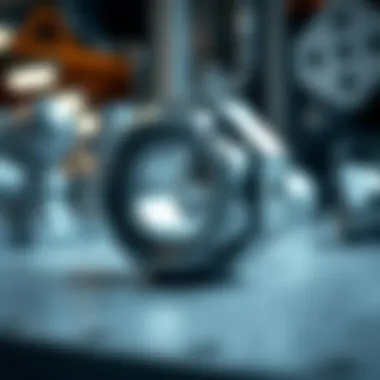
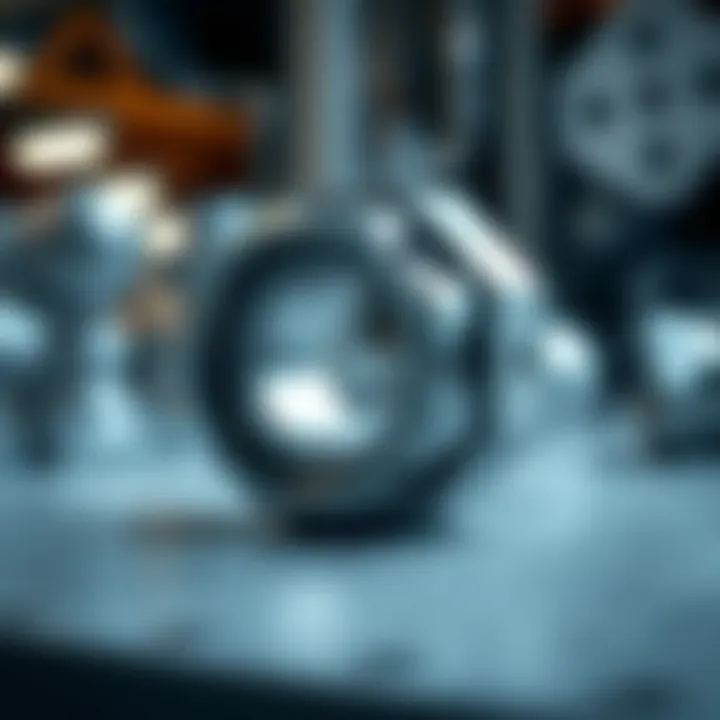
However, the challenge with quality assurance is the time and expense associated with rigorous testing protocols. While ensuring a high level of quality can be seen as a beneficial investment, the increased time spent on testing can slow down the manufacturing process, leading to potential delays in product delivery.
Certification Processes
Navigating the certification processes for 3D printed materials is often labyrinthine, particularly with something as intricate as titanium. Each industry has its standards and guidelines that must be followed, making it imperative for organizations to stay updated on regulatory changes.
A key characteristic of the certification process is its complexity, which often involves thorough documentation and inspections. Manufacturers must ensure that every component is traceable and meets the criteria set forth by regulatory bodies, like the Federal Aviation Administration for aerospace applications.
This also brings about unique challenges, as acquiring the necessary certifications can be time-consuming and costly. Nonetheless, achieving these certifications can significantly boost market trust, making it a worthy investment for conscientious firms. To summarize, while the regulatory landscape presents challenges, it also encourages high standards that ultimately benefit the industry and consumers alike.
Future of 3D Printed Titanium
The future of titanium in 3D printing lays the groundwork for not only the evolution of the material but also its impact across various industries. As we look ahead, the integration of advanced technologies and innovative practices will likely reshape how titanium components are designed and produced. This means that industries could significantly benefit from further efficiencies, cost reductions, and designs that were previously considered impossible.
Given titanium's unique properties such as its strength-to-weight ratio and resistance to corrosion, its application through additive manufacturing could open doors to numerous avenues. In this section, we will delve into emerging trends and the market outlook for 3D printed titanium.
Emerging Trends
Integration with AI
Integrating Artificial Intelligence with 3D printing processes holds vast potential for optimizing the production and design of titanium components. AI algorithms can analyze data from previous prints and suggest adjustments in real-time, leading to better outcomes each time a new print is initiated. The key advantage here is the adaptive learning capability of AI, which enables improved process parameters.
Such technology not only enhances material utilization but also decreases waste, making the overall process more sustainable. One unique feature worth noting is how AI can assist in predicting failures before they occur by simulating various printing conditions and material behaviors. However, implementing AI can also entail higher initial costs and a steep learning curve for personnel.
These challenges shouldn't deter industry players; instead, they highlight the importance of evolving skill sets in the workforce.
Advancements in Material Science
Advancements in material science are key to unlocking the full potential of 3D printed titanium. Researchers are continually discovering new titanium alloys and composites that enhance mechanical properties for specialized applications. For instance, the development of titanium-aluminum alloys can offer improved strength while reducing weight, which is particularly beneficial in aerospace and automotive sectors.
A notable characteristic of these advancements is the possibility of tailoring the material properties for specific applications. This versatility means that industries can request customized solutions that precisely meet their requirements. While the benefits are clear, a potential downside is the need for continual testing and validation of new materials, which can slow down the implementation in commercial products.
Predicted Market Growth
Industry Forecasts
The demand for 3D printed titanium is expected to surge as industries recognize the advantages of additive manufacturing. Analysts predict substantial growth, particularly in aerospace and medical fields, where the demand for lightweight, strong materials is paramount. This growth is not just about increased production; it also reflects a shift toward more sustainable manufacturing practices.
Key characteristics of this trend include the rising commitment of firms to invest in advanced technologies. Many companies are actively expanding their production capabilities and investing in R&D, driven by the prospect of reduced lead times and the capacity for producing highly complex components.
One unique feature of industry forecasts is the growing emphasis on global collaboration. As firms interact more, sharing insights and innovations, they can drive standards that enhance acceptance and credibility in the market. However, the competition can also lead to market saturation if new players enter too rapidly, which may impact profit margins.
Investment Opportunities
Investment opportunities in 3D printed titanium are blossoming, revealing a potentially lucrative sector for investors. With developments in technology and the material's growing acceptance, funds are flowing toward companies that leverage these advancements for competitive advantage.
The key characteristic here is that investors are not merely looking at traditional growth metrics but are increasingly assessing sustainability and innovation potential. A unique aspect of this landscape is the rise of startups focused on niche applications of 3D printed titanium, often gaining rapid traction due to their novel approaches.
However, though opportunities abound, investors must exercise caution, as fluctuations in metal prices and shifts in demand can pose challenges. This underscores the importance of due diligence and strategic approaches when navigating the investment terrain.
The future of 3D printed titanium hinges not only on technological advancements but also on market adaptability and the collaborative efforts of industry players.
The future of 3D printed titanium hinges not only on technological advancements but also on market adaptability and the collaborative efforts of industry players.
Culmination
The exploration of 3D printed titanium and its myriad applications cannot be overstated. As industries forge ahead into a future dominated by innovation and technology, the significance of harnessing titanium through 3D printing is becoming clearer. This section distills the essence of our discussion, emphasizing not only the vibrancy of this material but also the intricate web of possibilities it weaves across various sectors.
Implications for Research and Industry
Bridging the Gap
In the context of 3D printed titanium, bridging the gap refers to connecting the existing research with practical applications in industry. This creates an opportunity for researchers and corporations to collaborate more effectively. The crucial aspect of bridging this gap is the sharing of knowledge—scientists unveil new findings, while companies adapt these innovations to meet real-world demands.
Key characteristic of this approach lies in its collaborative nature; it allows for seamless integration of advanced concepts into traditional manufacturing methods. This blending is a beneficial choice for this article because it not only enhances the understanding of titanium’s capabilities but also fosters innovative solutions that can yield competitive advantages.
One unique feature of bridging the gap is the inclusion of big data analytics to predict trends and optimize designs. The advantages here are manifold: faster development cycles, reduced production costs, and an alignment with market needs. However, it does come with its disadvantages; for instance, the potential for miscommunication between research institutions and industries can lead to mismatched expectations, which could hinder progress.
Influence on Future Applications
The influence on future applications of 3D printed titanium cannot be overlooked. This extends beyond simply using titanium in existing frameworks; it encompasses how this material will shape new designs and functionalities in various fields, such as aerospace and medical devices. What makes this particularly exhilarating is its potential to innovate—to think outside traditional confines and reshape the way products are conceived and brought to life.
This aspect is quite beneficial for this article as it underscores the endless possibilities that titanium brings to the table, pushing boundaries to develop components that are not just lighter but also stronger and more efficient. A unique feature of this trajectory is the customization potential that comes with additive manufacturing. It allows for tailored solutions that meet the specific needs of individual consumers or applications.
The advantages of this influence include the ability to create personalized prosthetics in medicine or weight-saving components in aeronautics, which can lead to significant advancements. However, a notable disadvantage might be the initial costs associated with adopting such technology, which could deter smaller companies from exploring these innovations.
In summary, the conclusion emphasizes that 3D printed titanium is at a critical juncture. It holds immense potential for improving efficiency, reducing costs, and forging new paths in various sectors. Embracing this material's innovations involves not just keeping pace with technological advances but also anticipating future demands and adjusting strategies accordingly.
"The future belongs to those who believe in the beauty of their dreams."
-- Eleanor Roosevelt
"The future belongs to those who believe in the beauty of their dreams."
-- Eleanor Roosevelt
Through careful navigation of its implications, researchers and industries can ensure that titanium continues to play a pivotal role in shaping contemporary and future applications.



